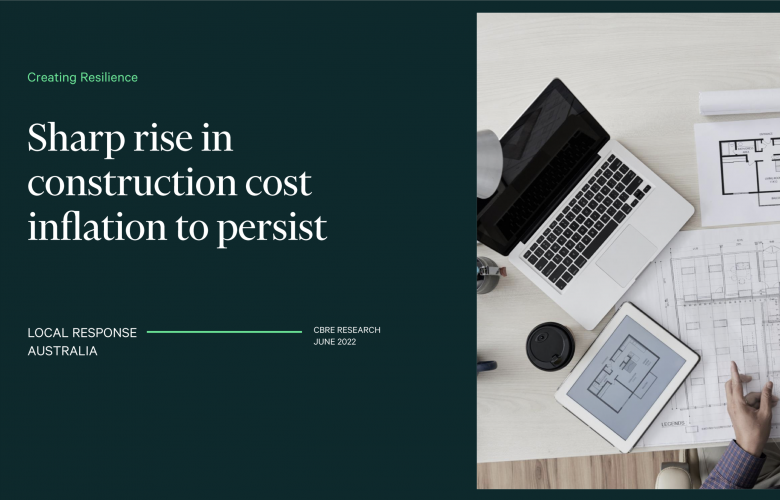Construction cost price escalations in Australia expected to peak in 2022 - CBRE
Contact
Construction cost price escalations in Australia expected to peak in 2022 - CBRE
Perth and Brisbane forecast to record highest y-o-y 2022 increases of 7% and 6% respectively
Australian construction costs have spiked in recent months, driven by inflation, economic stimulus and supply chain challenges. However, price escalations should peak this year and moderate in 2023 according to new CBRE research.
CBRE’s construction report harnesses data from Turner & Townsend, a global professional services company and CBRE subsidiary specialising in program management, project management and cost consulting across the commercial real estate, infrastructure and natural resources sectors.
The report highlights that unprecedented capital for large infrastructure projects, a residential construction boom, surging transport costs and increased pressure on freight costs and reliability have combined to drive increases across all key material and staffing indicators in the past 12 months.
But there are positive signs ahead, with residual construction from the Federal Government’s HomeBuilder program expected to keep Australia’s residential pipeline elevated and migration levels forecast to improve in 2023.
CBRE Research Director Kate Bailey noted, “While a sharp increase in construction costs is putting pressure on Australia’s development pipeline, margins and timelines, most cost escalations have now been built into project pricing, particularly for building materials, and further price increases will be more modest. While supply chain delays will persist, improvements are expected in early 2023 with cost increases from next year onwards to be largely driven by higher wage costs.”
Perth and Brisbane are expected to experience the greatest y-o-y state construction cost increases in 2022, of 7% and 6% respectively.
In Perth, a significant infrastructure pipeline is contributing to the demand for materials, with border closures and competition from the mining sector having constrained Western Australia’s labour supply and driven wage increases.
The pressures in Brisbane include a boom in residential construction and a series of major infrastructure developments, including the Cross River Rail and Queens Wharf projects, which are heightening the demand for materials.
“Recent reconstruction works to repair flood damage have also driven up material costs in Queensland, with continued population growth and infrastructure development ahead of the 2032 Olympics likely to see high construction costs persist,” Ms Bailey said.
Cost Escalation Forecasts by City
Source: Turner & Townsend
CBRE’s report highlights that Australian price increases have been recorded across all key material and staffing indicators in the past 12 months, with the cost of structural steel increasing the most (+39.5% per tonne) followed by plasterboard (+35.3% per sqm).
The cost of labour also spiked, with the average cost of a site foreman increasing by 11.5% per hour.
Ms Bailey noted that most recent construction contracts had priced in cost rises in materials, which would mitigate risks to developers, with the cost of labour expected to be the key driver of construction cost increases from 2023 onwards.










